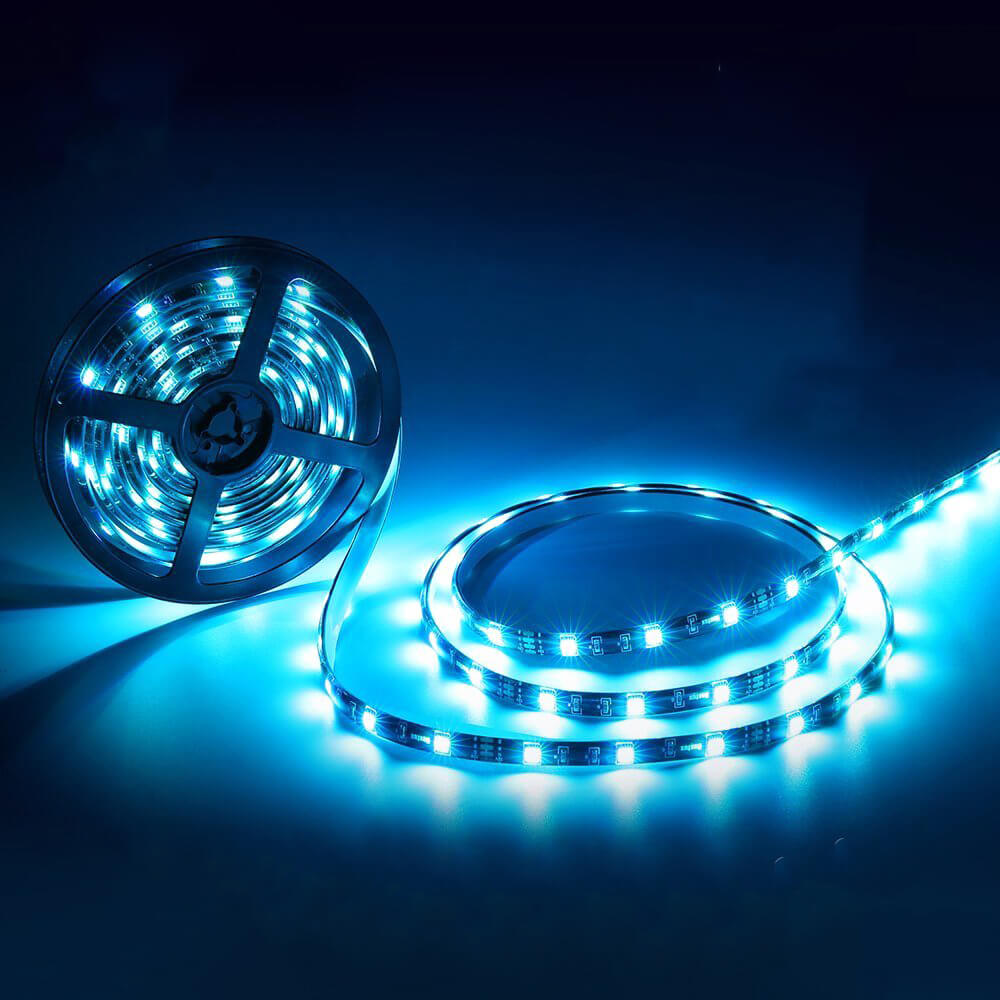LED strip lights are a popular choice for lighting in a variety of applications, from homes and businesses to cars and boats. But with so many different types of LED strips available, it can be difficult to know which one is right for you.
One of the most important factors to consider when choosing an LED strip is the voltage. LED strips are available in both 12V and 110V varieties. So, what’s the difference between the two, and which one should you choose?

Table of Contents
Toggle12V LED Strips
12V LED strips are the most common type of LED strip. They are typically used for indoor applications, such as under cabinet lighting, accent lighting, and decorative lighting. 12V LED strips are also a good choice for use in cars and boats.
One of the advantages of 12V LED strips is that they are relatively easy to install. They can be connected to a 12V power source using a simple wire connector. 12V LED strips also come in a variety of lengths and colors, making them a versatile option for a variety of lighting projects.
110V LED Strips
110V LED strips are less common than 12V LED strips. They are typically used for outdoor applications, such as commercial signage and building facade lighting. 110V LED strips are also a good choice for use in large indoor spaces, such as warehouses and factories.
One of the advantages of 110V LED strips is that they can be used with a wider variety of power sources. They can be connected to a 110V AC power source using a standard electrical outlet. 110V LED strips also tend to be brighter than 12V LED strips.
Which Type of LED Strip Is Right for You?
The best type of LED strip for you will depend on your specific needs and application. If you are looking for an easy-to-install option for indoor use, then a 12V LED strip is a good choice. If you need an LED strip for outdoor use or for a large indoor space, then a 110V LED strip is a better option.
Here is a table summarizing the key differences between 12V and 110V LED strips:
| Feature | 12V LED Strips | 110V LED Strips |
|---|---|---|
| Voltage | 12V DC | 110V AC |
| Power Source | 12V battery or power adapter | 110V AC power outlet |
| Applications | Indoor lighting, under cabinet lighting, accent lighting, decorative lighting, cars, boats | Outdoor lighting, commercial signage, building facade lighting, large indoor spaces |
| Ease of Installation | Easy | Moderate |
| Cost | More expensive than 110V LED strips | Less expensive than 12V LED strips |
Exploring Voltage Options: 12V vs. 110V LED Strip Lights
Understanding 12V LED Strip Lights: When opting for 12V LED strip lights, besides pairing them with a suitable adapter, it’s crucial to connect them to a light controller to amplify their color effects. Modern demands extend beyond color choice to encompass intelligent functionalities. To meet these expectations, the market introduces ingenious smart light controllers that can seamlessly integrate with LED strip lights. By directly connecting the LED strip light controller, users can wield remote control through a dedicated app, boasting features like voice control, a spectrum of 16 million colors, and customizable time settings. This innovation is offered through two main avenues: WiFi LED controllers and Bluetooth LED controllers, catering to diverse preferences and occasions.
Voltage Compatibility Matters: Whether linked to a LED strip controller or an infrared controller, the input voltage must remain within the range of 5 – 28 V DC, as opposed to 220V AC. Generally, light controllers are tailored for low-voltage LED strips, making them unsuitable for the latter. Consequently, 12V and 24V LED strip lights necessitate a constant voltage power adaptor, which provides a secure voltage level suitable for a wide array of scenarios, ensuring user safety.
Diving into 110V LED Strip Lights: High voltage LED strip lights come in two main variants: 110V and 220V, contingent upon regional voltage standards. While the frequency of AC power hovers around 50Hz worldwide, the United States deviates by utilizing 110V 60Hz AC power. Hence, for American applications, it’s pivotal to procure 110V 60Hz LED strip lights. Installing 110V LED strips mandates the expertise of a local electrician certified in the respective region.
Comparing Lifespan and Heat Generation: The longevity of LED strip lights varies based on voltage. 12V LED strip lights boast an impressive lifespan of 30,000-50,000 hours, whereas 110V LED strips manage around 10,000 hours. Notably, due to its higher voltage, the 110V variant generates more heat per unit length compared to the 12V counterpart, directly impacting its operational lifespan.
Length Considerations: Both 110V and 12V LED strip lights come in different lengths. 110V LED strip lights are available in volumes spanning 50-100 meters, while 12V strips offer lengths of 5-10 meters per volume.
Conclusion
In conclusion, the choice between 12V and 110V LED strip lights hinges on factors such as application, voltage compatibility, and desired functionalities. Each option presents distinct advantages and limitations, underscoring the significance of a well-informed decision-making process. By assessing your specific requirements, you can confidently select the LED strip lights that will best illuminate your space and elevate your environment.
